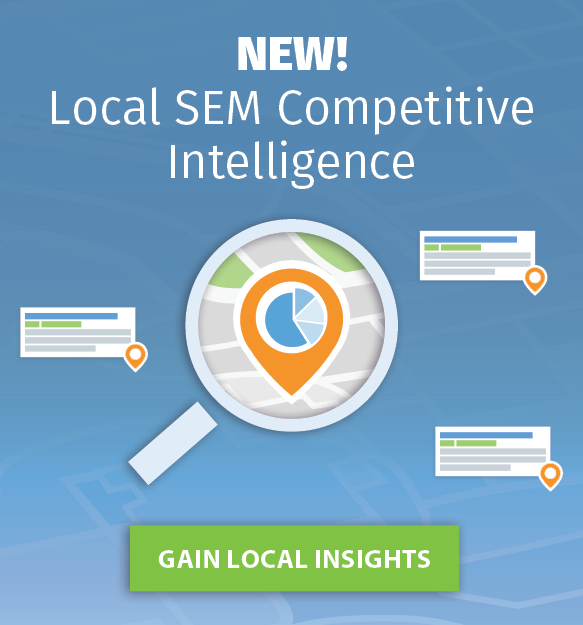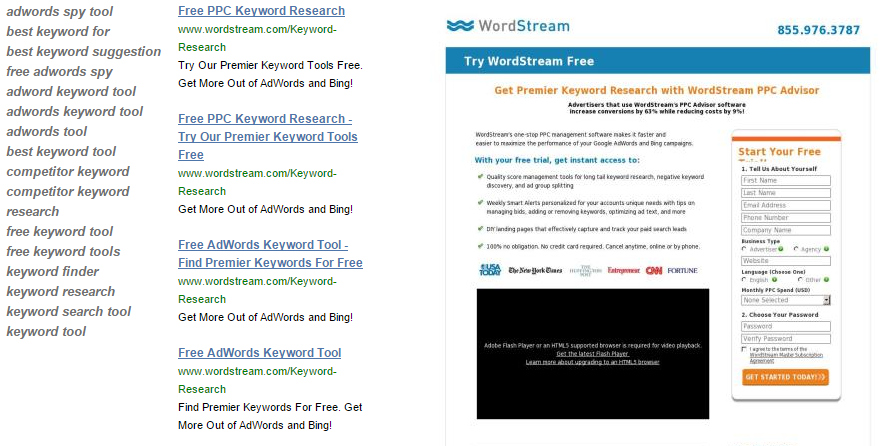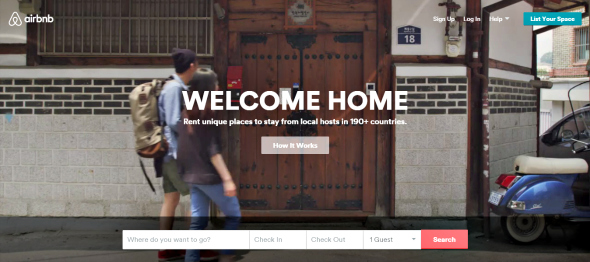
Here at iSpionage we recently released a new product—Campaign Monitor—that makes it easier to manage and monitor Enterprise-level PPC campaigns.
More specifically, it saves screenshots of competitor landing page (among other things) and sends daily alerts whenever competitors add new ad copy, keywords, and landing pages.
We think it’s pretty slick, especially when it comes to saving screenshots of your competitors’ PPC pages.
Why?
Because a picture really is worth a thousand words, and seeing screenshots of competitors’ landing pages quickly opens your eyes to their campaign structure and PPC strategy, which in turn gives you ideas for you own campaigns while also providing insights about exactly what your competitors are up to in case you need to find a way to respond.
But we don’t want to just tell you about how Campaign Monitor works. We also want to show you how it works with the following landing page examples and the lessons you can learn from monitoring your competitors’ PPC landing pages.
Quick Note: All sreeenshots come from Campaign Monitor by iSpionage and include the keywords and ad copy being used for each particular landing page.
Lesson #1: Your competitors might be calling you out
The first lesson we learned from monitoring a handful of PPC campaigns is that your competitors might be calling you out, and unless you’re monitoring their campaigns, you’ll be none the wiser.
In the example below, Volusion, one of Shopify’s top competitors, calls them out with a landing page that says Volusion store owners make $85,000 per year on average while Shopify owners earn only $21,000. They also draw attention to this fact by writing “See why our merchants make 4X more than Shopify’s.”
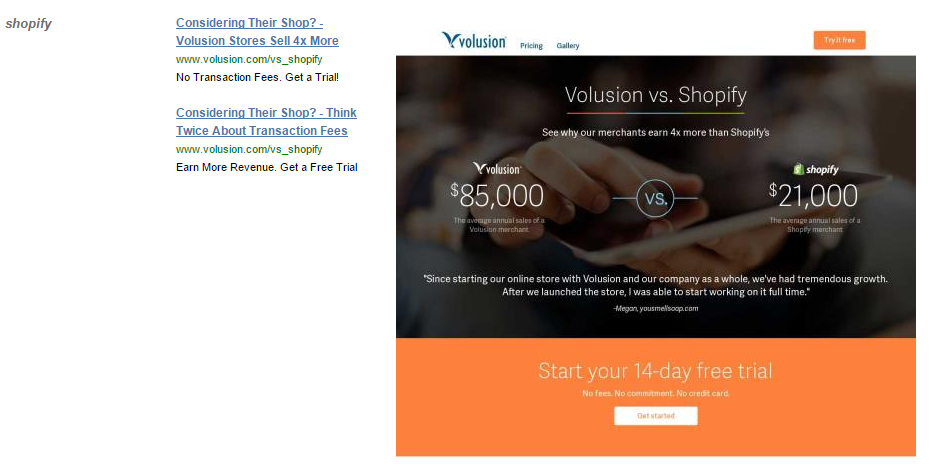
I’m not sure how Volusion determined their store owners earn 4X more on average than Shopify’s, but if I was managing PPC campaigns at Shopify, I’d definitely want to know this is part of Volusion’s strategy so I can decide how to counter the statement.
Maybe Shopify could emphasize how many people use their online store solution, or maybe they can emphasize how much easier Shopify is to use than the competition if that’s one of their distinct advantages. Either way, I’d want to know that Volusion is calling me out like they are so my team can go to the strategy room and figure out how to respond.
When you scroll down the page you also see a negative testimonial from a dissatisfied Shopify customer, a strategy I’ve never seen before. It says, “Shopify is not very clear on the transaction fees and advertising fees to potential users. Shopify needs to do a better job of making these fees apparent. I don’t see an incentive to stay with Shopfiy long when they are entitled to 2% of my sales.” The anti-testimonial is then signed by “Shopify customer.”
Wouldn’t you want to know if your competition is advertising for your brand name like Volusion is so you can decide how to respond? I sure would, and this is the first reason it makes sense to monitor and study your competitors’ PPC landing pages.
Lesson #2: Uncover your competitors’ campaign structure and strategy
The next reason to study your competitor’s PPC landing pages is to get a better idea about their campaign structure and strategy to see what you can learn.
Some advertisers follow PPC-best practices and organize keywords into tight groups and show custom landing pages for each different group so the landing page content closely matches the keyword being searched.
In the example below, they focus the page content on keyword research for terms that include “keyword research,” while for the page below that they focus the page content on campaign management in order to match the term “pay per click management” that visitors were searching for.
Example #1
Example #2
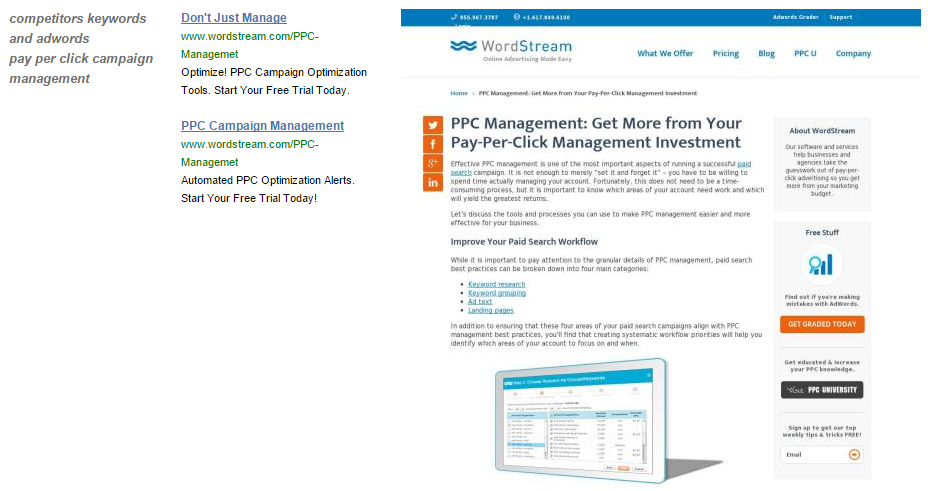
Neither of these pages features a gorgeous design but are designed well enough to provide a professional presentation of Wordstream’s brand. They’re also great examples of following PPC 101 best practices by making sure your landing page content matches what people are searching for.
Lesson #3: Know when your competitors run new special offers
One of the most useful features of Campaign Monitor is the landing page alerts it sends whenever new landing pages are detected. Not only does this give you a constant stream of new ideas for your own campaigns, but it also means you’ll be the first to know if a competitor runs a new special offer.
In the example below, BackCountry recently started a new Semi-Annual Sale with up to 50% off of clothing, skis, bikes, and more.
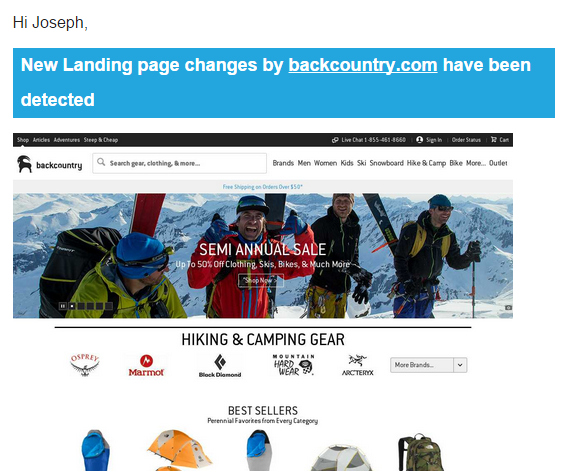
If you happen to compete with BackCountry, like REI and other outdoor sites do, you’d be the first to know about all of their special offers and sales by signing up for Campaign Monitor so you start getting daily alerts for any new keywords, ad copy, and landing pages your competitors start using. You’d also be the first to know about TeleFlora’s new Valentines Day landing pages (example below) if they happened to be one of your top competitors.
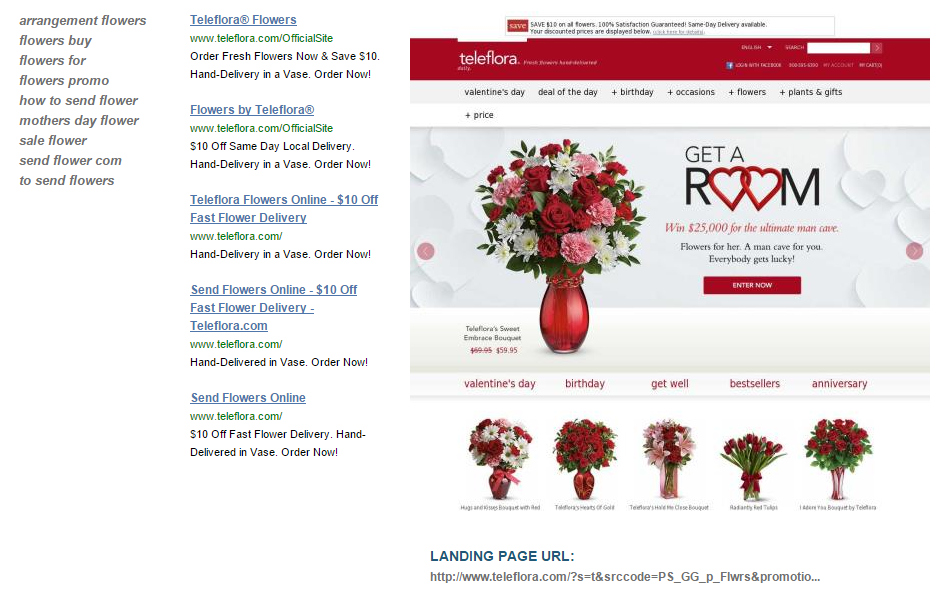
Lesson #4: Get new landing page design ideas
Another benefit of studying competitor landing pages is that you’ll receive a constant stream of new landing page design ideas.
You might learn that most of your competitors are using simple pages which gives you the idea to test pages that are more simple and easier to read. On the other hand, your competitors might be using pages with a fancy design providing you with new layout and design ideas to try out.
Either way, studying your competitors ensures you’re able to consistently create pages that stand out and makes sure your team always has a constant stream of new ideas to work with. The latter option is especially beneficial for agencies that are looking for new design ideas to try each month in order to boost conversion rates for clients.
The examples below also happen to be two of my favorites.
This first one is a beautifully designed landing page by Ritani. It’s a great looking page with an interesting and unique format, something we might try here at iSpionage to see how it works.
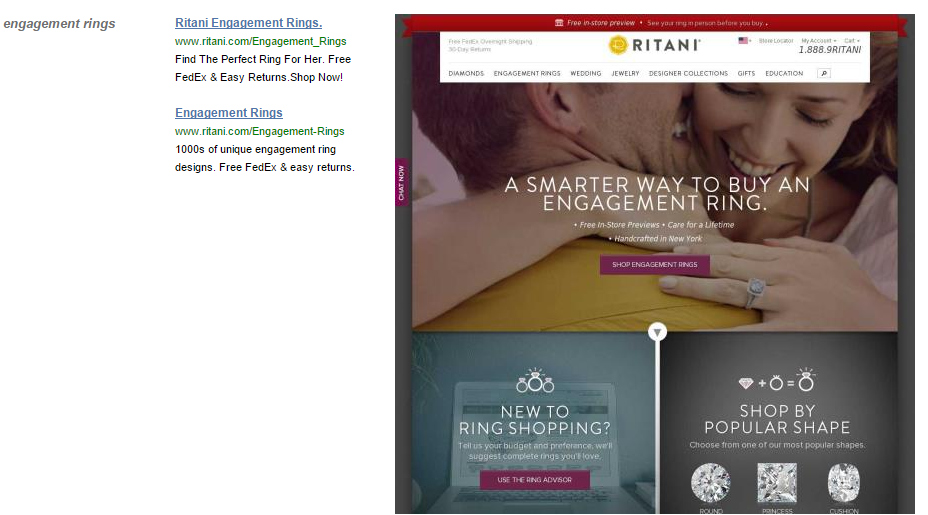
This second page is a super simple even boring page from Geico. Since we know Geico does a really good job with their ad campaigns and knows how to make a lot of money from advertising, we’re pretty certain this page works for them. And if I worked for Progressive or someone else in the same industry, I’d definitely test a simple page to see if this approach could boost our conversion rates.
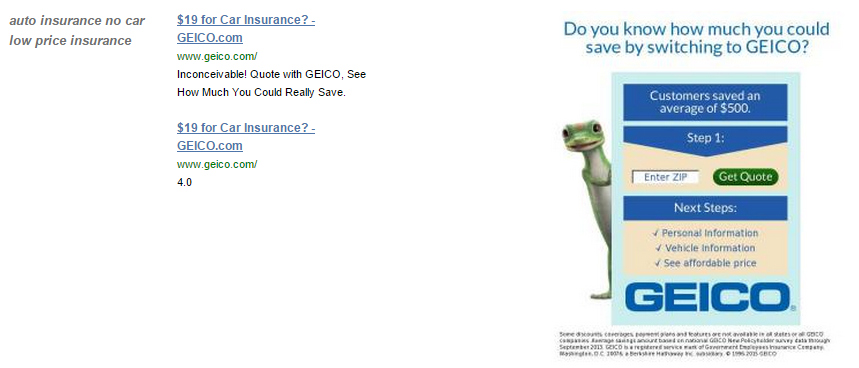
Who’s a good fit for Campaign Monitor?
At this point, you may be wondering, “Who’s a good fit for Campaign Monitor? Is this something I should check out?”
Our recommendation is that it’s perfect for anyone who’s spending roughly $5,000 per month or more on PPC advertising in a competitive industry or agencies running these types of campaigns. Not only does it provide landing page screenshots and daily alerts from your competitors’ PPC campaigns, but it also charts your impression share and average ad rank compared with competitors so you’ll be the first to know if you’re campaign starts to lose ground to the competition.
If you’re interested in seeing Campaign Monitor in action with data from your industry, click here to sign up for a 15-minute demo. We’ll set up a sample project and show you how it works with the keywords and competitors you request. Space is limited so be sure to sign up today to reserve your time slot to learn more about how Campaign Monitor gives you the advantage you need to be more successful with your PPC campaigns.
Author
 Joe Putnam is the blog editor and a marketing manager at iSpionage. You can get in touch with him on Twitter at @josephputnam to talk about PPC and on Clarity to get advice about content marketing.
Joe Putnam is the blog editor and a marketing manager at iSpionage. You can get in touch with him on Twitter at @josephputnam to talk about PPC and on Clarity to get advice about content marketing.
